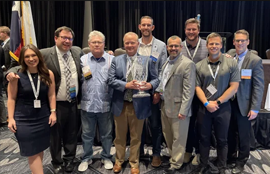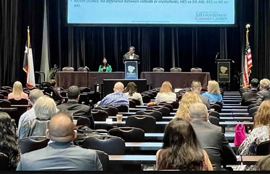-
Posted by
developer
The Seeds of Advocacy Must Be Planted Early and Watered Often
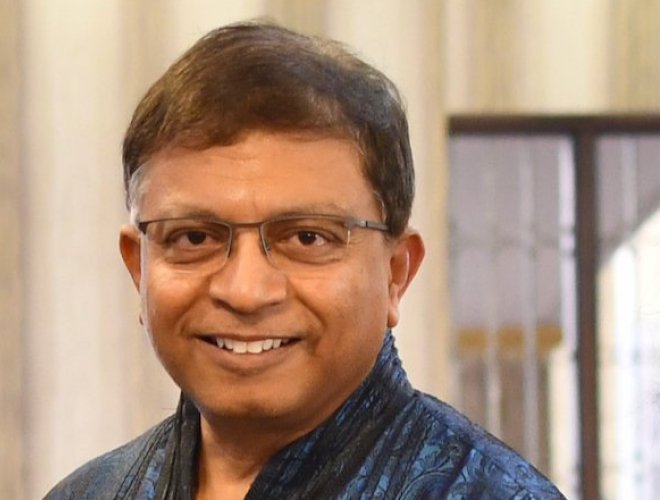
Udaya Bhaskar Padakandla
MD, FACI, FASA President – Texas Society of Anesthesiologists Dallas, TX
Since assuming presidency of the Texas Society of Anesthesiologists (TSA) last September, I have been touring many of the anesthesiology groups in the state of Texas
As of June 2024, I have visited all but one of the academic anesthesiology departments in the state. The last of these visits is scheduled for July. I have also traveled to smaller cities and met with the private practice anesthesiologists in those places. I am also scheduled to visit several more group practices in the coming months. I have made several observations as I visit these places and meet with the residents, faculty, and the non-academic practitioners. All of my meetings have been very well received and there have been cordial exchange of ideas and concerns regarding the usual political and regulatory issues concerning the practice of anesthesiology in the state of Texas.
There is a real need to take the messages generated at the TSA annual meetings in the committees and the House of Delegates home to our groups who were not at the meeting. We need to remember that only a small percentage of residents, faculty, and private practitioners are able to attend the annual meetings of the Texas Society of Anesthesiologists. For the advocacy message to reach the other members of these departments, the community practices, and the private groups, someone at the TSA leadership level needs to travel to these smaller places in the state. That is the primary purpose of my travels across the length and breadth of Texas.
Residents and medical students are the future of this profession and are the future leaders of this society. To garner their interest in advocacy matters and engage them in advocacy itself, we need to get them started early in their training. I organized my advocacy trips to these academic departments into two distinct parts, utilizing a two-day visit. On the first day, I meet with the residents and the program directors, department chairs, and any other interested faculty at a location outside of the hospital, preferably a restaurant. Over the course of a dinner meeting, I share with them a presentation filled with facts and figures pertaining to our society’s perpetual battle, namely the scope of practice expansion. I also emphasize other aspects of our advocacy campaign, namely establishing relationships with local legislators, attending annual State Capitol visits, joining political action committees, and, in general, becoming advocates for our our patients and our profession.
On the second day, I deliver a Grand Rounds talk where I discuss healthcare issues in this country, namely the burden of healthcare debt and the role of the Centers for Medicare & Medicaid Services and insurance companies in healthcare delivery. Using publicly available data, I show them how the insurance companies, pharmacy benefit managers, group purchasing organizations and hospitals all align to contribute to the ever increasing cost of healthcare. It is important for the doctors in training to understand how the physicians and the patients are exploited by these entities and how the profit motive from these big players shifts the ever-increasing cost of healthcare on to the patients and their families while, at the same time, creating an ever-increasing profit margin for themselves.
My sincere plea to the residency program directors in this state is to standardize a course of up to three lectures on healthcare policy and basics of healthcare economics in the residency curriculum and introduce these lectures at the outset of the residency training. The seeds of advocacy need to be planted early and watered often.
My trips to the smaller cities in Texas have had a slightly different emphasis. While I still like to show them the data regarding healthcare debt and the health care crisis in the country, I also try to link them up with their local legislators whenever possible. The idea is to establish key contacts with local legislators so our anesthesiology colleagues will hopefully be the points of contact whenever legislative bills that have to do with healthcare come up during the legislative sessions. Establishing contact with legislators and even developing friendships with them is a great way to have impact on matters at the local levels. Make no mistake, during every legislative session there are guaranteed to be scope of practice battles. It’s during the debates on these bills that the legislators are likely to call upon the physicians from their home districts with whom they have developed trusted relationships. Helping my colleagues develop key contacts with their local legislators is, therefore, my priority in making trips to these smaller cities in the state.
It is my sincere hope that future TSA presidents will continue this tradition and broaden the contacts we have with the society members across the state both by visiting them in their local communities and, as a result, fostering engagement in the political processes. Political engagement at local, state, and federal levels is very important for the survival of our profession. As longtime American Society of Anesthesiologists leader, the late Dr. Bertram Coffer, said, “What happens in the halls of Congress has a greater bearing on the healthcare of our patients than what happens in the laboratories of medicine”.
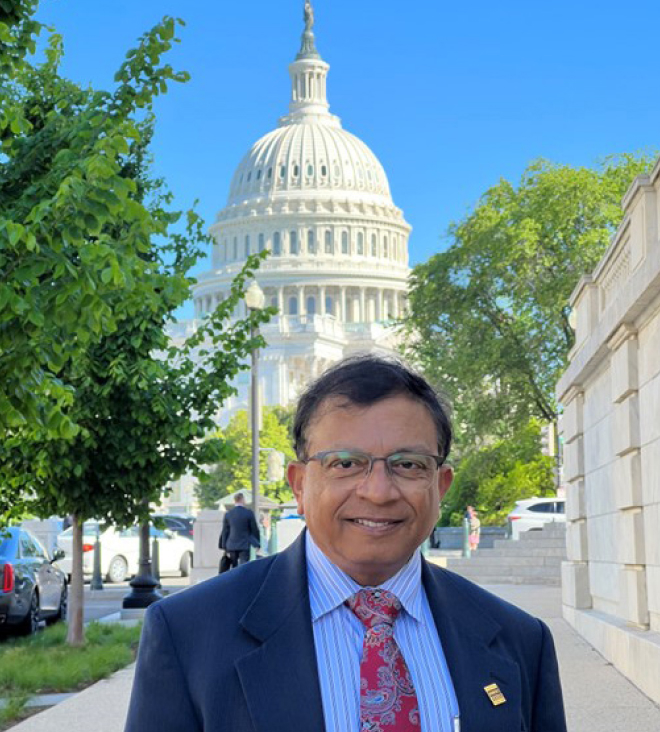
Udaya Bhaskar Padakandla, MD at the US Capitol
TSA Facebook Feed
TSA Member Alerts
The Texas Society of Anesthesiologists is pleased to announce the opportunity to apply for funding through the TSA-START (Scholarly Targeted
Posted 04/2023
TSA provides CME programs; advocates at the legislative, regulatory and legal arenas; and through its representation at the ASA, TMA, and AMA, it insures that TSA’s voice is heard at the state and national levels.
Posted 03/2023
The TSA is a voluntary, non-profit association of over 3,800 members interested in the medical specialty of Anesthesiology and it is a component of the American Society of Anesthesiologists.
Posted 07/2022
The American Society of Anesthesiologists is an educational, research and scientific association of physicians organized to raise standards of the medical practice of anesthesiology and to improve patient care.
Posted 01/2022
TSA Upcoming Events
September 20-21, 2024
Course instructors from maternal fetal medicine, Critical care, cardiac, TRAUMA & OB anesthesia
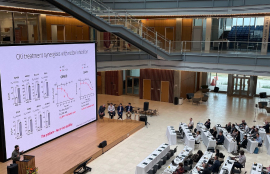
September 20-21, 2024
This year's program is an exciting multidisciplinary interactive program, discussing key principles and the latest advances in enhanced recovery and perioperative medicine.


Get your Free Texas Prescription Monitoring Program CME today!
